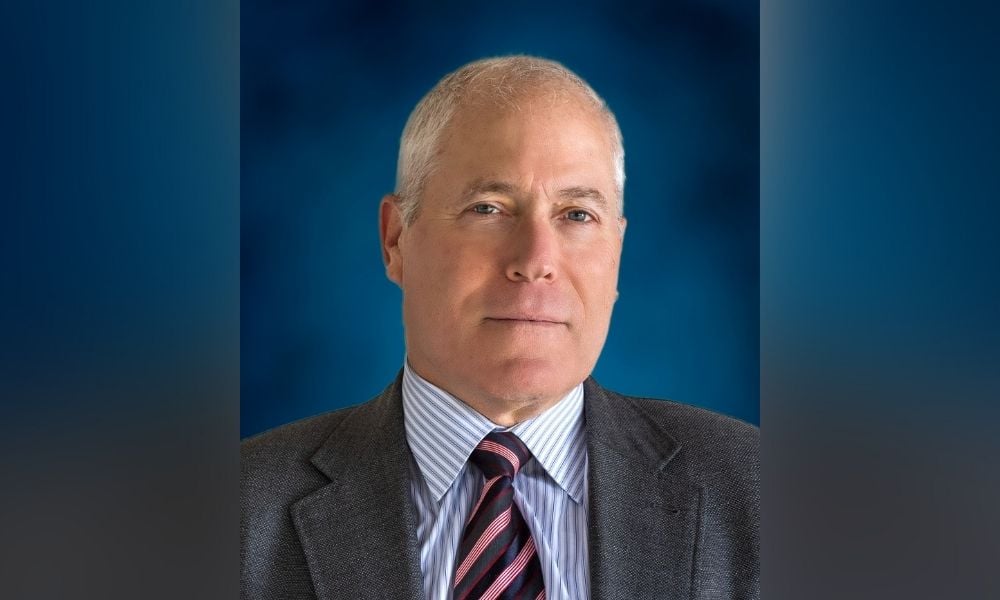Leave no stone unturned: firm’s thought leadership, proven results make it a top choice

This article was produced in partnership with Gluckstein Lawyers
Mallory Hendry of Canadian Lawyer sat down with Richard Halpern, senior counsel and lawyer at Gluckstein Lawyers, to discuss what clients should be thinking about when choosing a lawyer.
From writing and lecturing, to sharing best practices and hosting seminars, Gluckstein Lawyers strives for perfection as a plaintiff-side medical malpractice firm. Recognizing perfection isn’t an achievable goal, that doesn’t stop the firm from trying — and it’s a force in the field because of it.
“We leave no stone unturned in looking after our clients,” says Richard Halpern, senior counsel and lawyer at Gluckstein. “Our objective is to look carefully at the merits of each case and get our client the absolute best results, and the only way to meet that goal is through meticulous preparation and hard work on behalf of your client.”
It’s no secret that medical malpractice is among the most challenging areas of personal injury practice, with factually complex cases involving highly technical issues. The lawyer must do a forensic assessment of each case, often reviewing thousands of pages of records, and be able to understand and evaluate scientific and medical literature “in order to serve clients properly, interact with experts properly and identify the issues of standard of care and causation properly,” Halpern says.
With few exceptions, one being birth trauma cases, clients usually have some sort of pre-existing underlying medical condition and it’s another challenge to tease out the degree to which the damages are due to that condition versus the degree to which it was exacerbated by poor care. Compounding that difficulty is the fact that there are often multiple wrongdoers in each case, where the act of just one wasn’t enough to cause the bad outcome, but combined to cause the harm. For example, if you ask whether the negligence of Dr. A caused the harm, and don’t also look at the actions of Nurse B, the answer may that Dr. A, on her own, didn’t cause the harm — you needed the act of Dr. A as well as the act of Nurse B.
“This makes the causation analysis and the legal causation question you have to ask in these cases very difficult,” Halpern says. “I’ve written extensively on the fact that juries and judges have a great deal of difficulty formulating the question of causation when multiple wrongdoers are involved in medical care, and that complexity distinguishes it from other tort cases that might be simpler to analyze.”
Because of its complicated nature, when choosing a lawyer to handle a medical malpractice claim, the public needs to understand that not all firms are created equal. Just as you would go to an orthopaedic surgeon over a general practitioner to fix your broken leg, you’re not going to go to a real estate lawyer to handle your medical malpractice case — but it’s even more nuanced than that, Halpern notes. Many firms claim to do medical malpractice, and likely handle some cases, but not every lawyer has the same skill level. Part of the challenge for clients is figuring out what questions will help tease out how much experience a lawyer actually has.
Halpern recommends anyone looking for a lawyer begin at the same starting point: pull together all available facts of the case and determine as best they can where the criticism of care lies. With that in mind, when speaking to the lawyer the client should ask themselves if the lawyer appears to understand the issues they raise — if the lawyer has solid experience, they should have a solid initial grasp of the situation. Next, listen for feedback. Does the lawyer ask good questions? Do they accurately summarize the relevant facts?
After the initial conversation, the client should expect the lawyer to articulate a strategy for moving forward. What’s their approach to identifying the facts? What are the standard of care and causation issues they’ve identified? Do they have a plan for how they’re going to test the case — for example, what experts they’ll retain — and a timeline for that process? The very first thing a lawyer should do is a liability investigation, because they need to know if they can prove a breach of the standard of care at the outset. If they can’t, there’s no point in looking at damages.
“People don’t usually take that approach in other kinds of tort litigation, but in these cases it’s essential,” says Halpern. “You don’t want to take your client down the road to litigation unless there’s good reason to do so.”
The client should also consider what the lawyer has done to educate others in the field. Specific to the lawyer, a body of respected work is a simple way to gauge whether or not they have the skills to handle the client’s important case. Over the last three decades, Halpern has established himself as an expert on the issues of concern to his clients within the areas he covers. One example is a book he’s written with some colleagues in other provinces that addresses common questions parents have when their babies have been injured during childbirth. Halpern has also posted numerous articles for the public and for the profession, and lectured extensively on medical malpractice to both medical and lawyer groups. Over the course of his career, he’s given hundreds of talks on issues related to litigation and medical malpractice litigation and has a reputation for tackling the most difficult cases, especially through his focus on birth injury.
From a firm perspective, there’s much to be said for one that strives to be a thought leader in the field and takes the education of all stakeholders seriously. Gluckstein hosts an annual seminar called Risky Business, and Halpern says overall the firm doesn’t claim any proprietary interest in its strategies. They readily share with the profession because “the goal is to make sure every lawyer who does this type of work does the best job they can for the client.”
The firm also prioritizes hands-on mentorship for its new lawyers, and consistently provides internal continuing legal education seminars covering important issues like discovery and expert strategy or preparing a file.
“It’s constant learning that we do on a regular basis, certainly within the firm and also more broadly within the profession,” Halpern says. “Gluckstein effectively demonstrates that we’re prepared to mentor, tutor, share and work with other lawyers to advance the interest of the client.”
Setting aside objective markers of skill, ultimately the client should get the sense that the lawyer “is interested in the merits of the case and proving those merits to benefit the client: that’s got to be the motive.”
“Clients need to feel that the lawyer knows what he or she is talking about and has the ability to focus, in a laser-like way, on the issues of importance and on how to move the case forward,” Halpern says. “Medical malpractice is a lot of hard work, and you want a lawyer on your case who knows there’s no substitute — it's the only way to achieve great results.”
Richard Halpern is a senior lawyer acting exclusively for injured people in medical negligence cases, with a special focus on infants injured at or around the time of birth. Richard is known across Canada for his expertise in birth injury cases. He has more than 30 years of experience representing seriously injured people.










